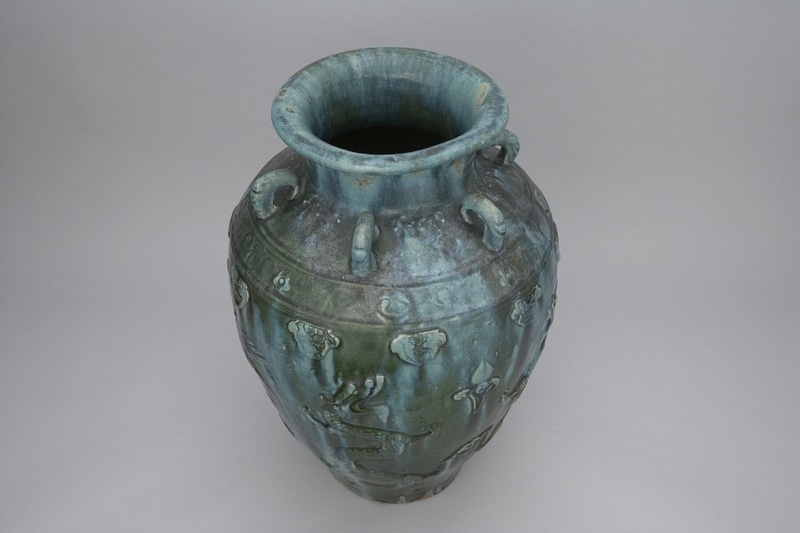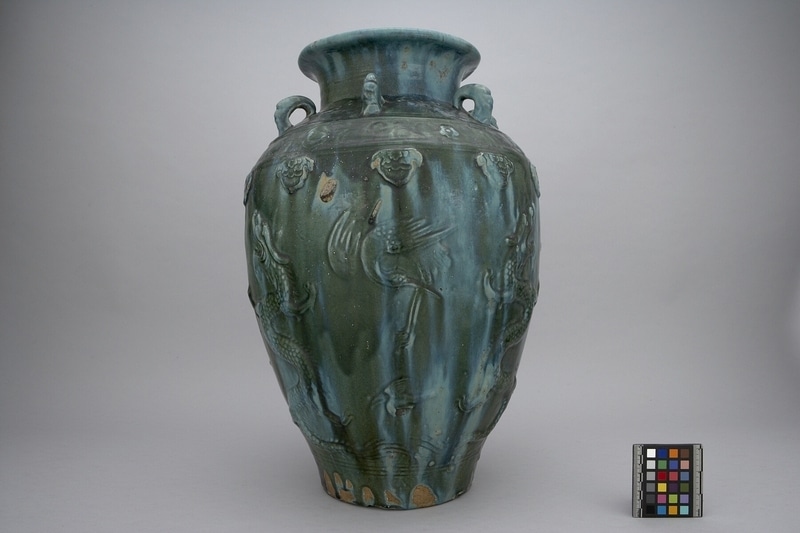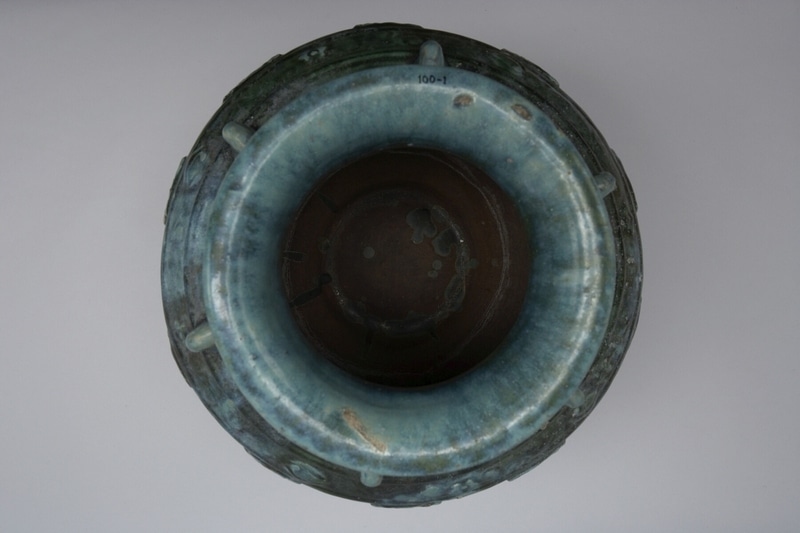Jar Item Number: Edz4322 from the MOA: University of British Columbia



Description
A tall round jar with wide mouth and six vertical lugs on the shoulder. The body design is of two pairs of vertical s-shaped, three-toed dragons. Each pair has a flaming pearl on a cloud between them. The dragon pairs are separated by cranes and swallows. The shoulder of the jar is ringed with three bands of floral patterns two of which are variants of the ruyi motif. The jar is glazed from the interior neck, over the rim and down the body until just short of the base. The lip has a set of inked numbers.
History Of Use
Probably exported from China via the Burmese port of Martaban from which the generic name for large jars is derived. These pot-bellied jars were designed for long journeys at sea, with lugs big enough to pass a rope through and as containers for food, oil and water as well as for packing smaller porcelains. They are also referred to as dragon jars because they often have a moulded dragon decoration on their sides. These jars were important trade items in south east Asia during the Song (960 - 1279 C.E.) and Ming (1368 - 1644 C.E.) Dynasties. Besides China, Martaban jars were also manufactured in other parts of Southeast Asia such as Burma, Cambodia, Thailand and Vietnam and are still being manufactured today in certain parts of Asia.
Specific Techniques
Probably hand-built with clay rings of varying sizes. These were fused together by holding a mallet with a convex face against the inside surface of the jar and tapping gently with a concave mallet held against the outer surface.
Narrative
From a collection of about ten Martaban (or dragan) jars brought by an itinerant Indonesian peddlar to Hugh Moss Limited in London in 1976 and subsequently acquired by the donors.
Cultural Context
exchange; status; ceremonial; art market
Iconographic Meaning
The dragon is a divine animal embodying the yang or male principle and is emblematic of good fortune. Dragons frequently occur in pairs with each chasing a round object variously interpreted as sun, moon, pearl or the yin yang emblem. The crane is emblematic of longevity as is the ruyi said to be derived from the ling chi or the sacred fungus of immortality. The swallow is seen as an omen of approaching success.
Item History
- Made in China between 1799 and 1900
- Owned by Julia Tecson and Miguel Tecson before November 16, 1987
- Received from Julia Tecson (Donor) and Miguel Tecson (Donor) on November 16, 1987
What
Who
- Culture
- Chinese
- Previous Owner
- Julia Tecson and Miguel Tecson
- Received from
- Julia Tecson (Donor) and Miguel Tecson (Donor)
Where
- Holding Institution
- MOA: University of British Columbia
- Made in
- China
When
- Creation Date
- between 1799 and 1900
- Ownership Date
- before November 16, 1987
- Acquisition Date
- on November 16, 1987
Other
- Item Classes
- ceramics
- Condition
- good
- Accession Number
- 1262/0025